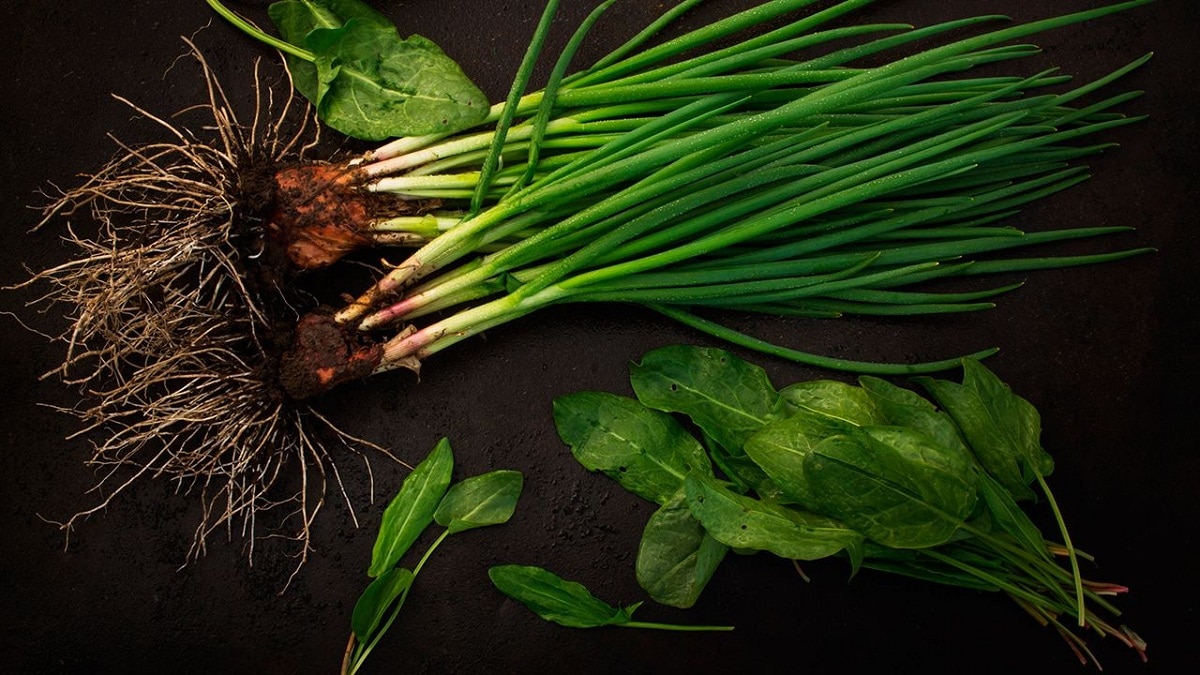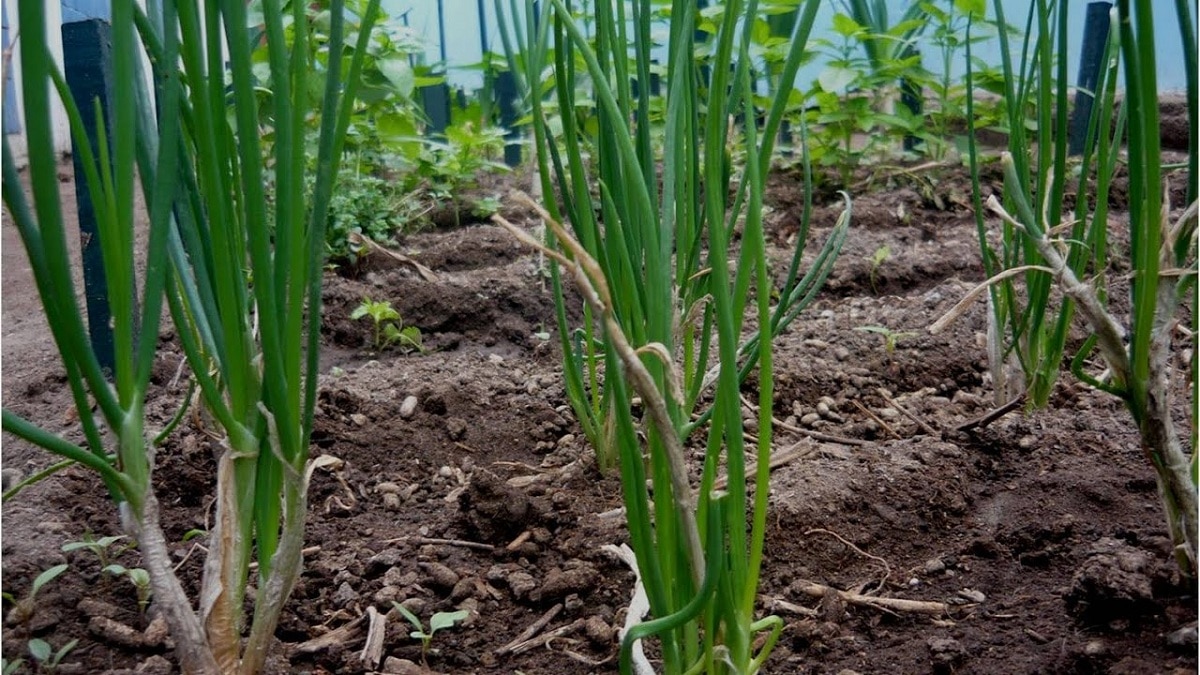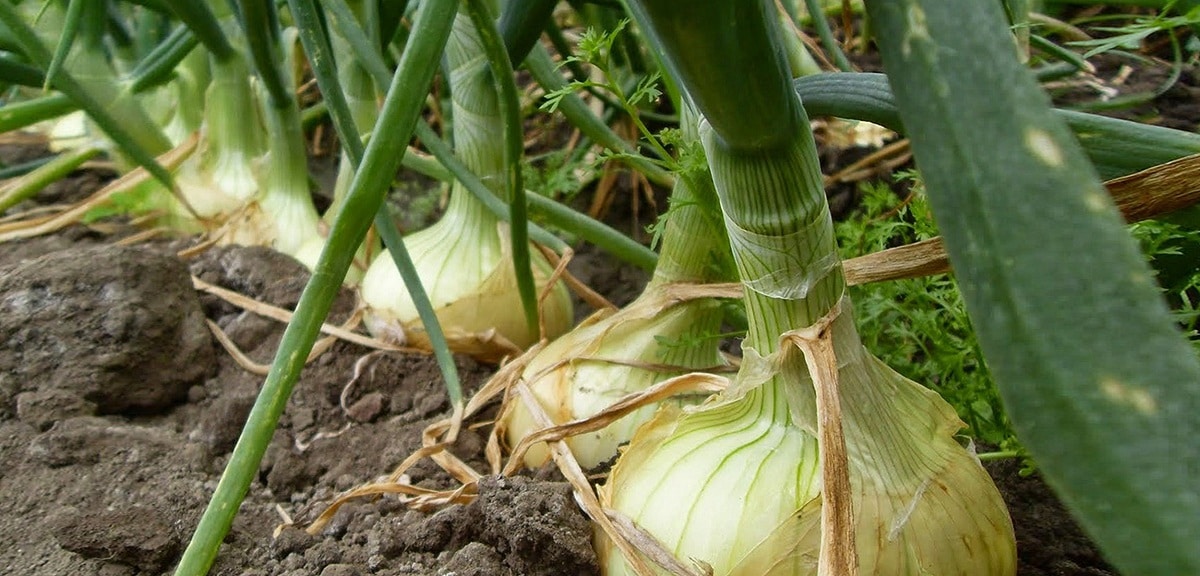
One of the most versatile crops that we find during the spring season is the spring onion. It is also known by the name of green onion and has some requirements that you must follow if you want good results. There seems to be some confusion about what a spring onion is. It may be that its name varies from country to country. For example, in Spain it is called onion, green onion or spring onion, while in Canada and the United Kingdom it is called green onion or onion, so the identification is a bit confusing.
In this article we are going to tell you everything you need to know to learn how to grow spring onions and what their requirements and characteristics are.
spring onion

First, we'll explain what a spring onion is. Shallots can be said to be a milder type of onion than regular onions. In fact, it's quite common to use it instead of onion in recipes for a less intense flavor. It is also very common to eat it raw, since It does not have a very strong flavor and is pleasant to the palate. Green onions are a very popular vegetable in Asia, which is why there are so many spring onion recipes. While it's true that Chinese chives have thinner bulbs and less flavor, it doesn't really matter if you use one variety or another.
Green onion is a food very beneficial for our body due to its high content of fiber, minerals and vitamins and acts as a body regulator. In addition, it is a great ally for those of us on a diet due to its low calorie content.
Uses

Spring onions are used in a similar way to ripe onions or chives. However, will have a stronger flavor than chives, so if you don't want that "chives" flavor, just use onions. Leeks are great grilled, lightly brushed with olive oil, charred on the outside, and sweet and juicy on the inside. They also make a wonderful sweet onion "relish" that is sublime on top of hot dogs. They are delicious, sliced, fried or sautéed in a pan.
Spring onion cultivation

Climate and soil
The best conditions for onion growth are in full sun. In its early stages of development it can tolerate cold conditions, but once the bulbs develop and gain size, the temperature must rise, depending on the arrival of spring (early varieties) or autumn and summer departure (late varieties).
If we had to give values, we would say that the optimum temperature range for growing spring onions is 15ºC. Of course, it also depends on the breed. The most common is that most varieties require temperatures above 15 ºC at all stages of cultivation, but there are others that require a cold period at first. However, this is not the most common.
For the best development of the onion crop, a light, permeable, spongy and deep soil is required, since it is a bulb. Depending on the nature of the soil, a little compost may or may not be added.
Irrigation and compost
Irrigation must be constant, but it does not require much water. It seems that lately we tend to talk about continuous irrigation, but in this case we need it more than ever when growing onions. In fact, we changed it to another color, onions don't tolerate too much moisture, so what you should do is water less but more often. Don't let the soil dry out, and when you realize it, take a very rich watering and go watch TV. This can lead to cracks and rot.
In the fall, a lot of compost is added to the soil. Require it to decompose, i.e. it spends a lot of time in the stack being formed and has already completed the process. Onions need a lot of potassium and phosphorous, but a similar proportion of nitrogen.
Some Spring Onion Care Tips
- The gardens where onions are grown they must be kept free of weeds at all times.
- In the pre-harvest period, mulch is recommended, where you can take advantage of weeds that have been removed.
- If some plants bloom, they stand out when they haven't grown enough. If we let it bloom, the bulbs do not form well.
- When the tips of the onion leaves begin to turn yellow, they twist and break the neck, then lift the onion slightly off the ground so that the head dries. Then, after 2 or 3 days, remove them completely and dry them in the sun.
harvest and seeds
Growing green onions is easy because they take up very little space and have shallow roots that allow the plant to burrow into the garden or pot. You can buy seeds to plant, or if you've had a previous crop (or a friend), let the seed heads mature and cut them off. Put the seed heads in a paper bag and let them dry for two weeks. This way you have the seed. Store them in a cool, dry place.
Sow seeds in prepared beds or indoors or outdoors. Rake the bed to remove debris and stones, and amend the soil with a little organic soil conditioner. In soils rich in humus and well drained, chives prefer a soil pH of 6.0-7.0 and full sun.
You can continue to grow shallots year-round, either outdoors or in a greenhouse, every 3-4 weeks in a row for a continual supply of this beautiful allium. Your shallots will be ripe and ready to eat in 8 to 12 weeks.
As you can see, spring onions are relatively easy to grow and maintain. Its benefits are extrapolated to any type of diet and It is perfect to have in your home garden. I hope that with this information you can learn more about the spring onion and its characteristics.